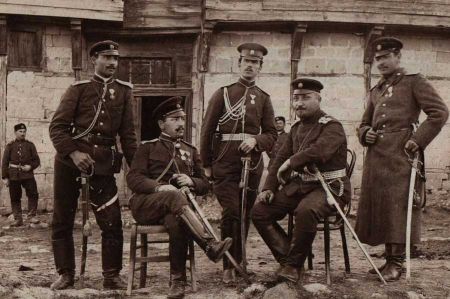Çatalca - Population Exchange Museum
- Written by Portal Editor
The establishment of a new museum in an old warehouse with the permanent exhibition on the history of the resettlement of Turks and Greeks from 1922-24 prompted us to visit the city of Çatalca in Thrace, about 50 minutes by car from Istanbul on the European side.
Çatalca was conquered by Sultan Bayezit I in 1371 and was given the new name "Çatalburgaz" by the conquerors. At the end of the 16th century, the Grand Vizier Ferhad Pasha had Çatalca expanded and Mimar Sinan built the Ferhad Pasha Mosque. During the First Balkan War 1912–1913, the front line (the Çatalca line) ran east between the Bulgarian and Ottoman armies. In the assault on Constantinople, which took place against the will of the chief of staff Ivan Fitschew, the Bulgarian army was stopped in the battle of Çatalca. Until 1924 the population was mixed, but the majority was Greek. Until 1926 Çatalca was an independent province. With the ordinance of June 26, 1926, it was downgraded to a district and joined the province of Istanbul.
Greeks and Turks in harmony
Even while driving, the traces of Greek culture are clearly visible on the buildings and facilities. The history of the region can be traced back around 2,500 years, so the name of the city in ancient times was Ergískē, based on the name of a son of Poseidon Ergiscus. The Ferhad Pascha Mosque is still one of the most impressive sights of the city due to its architecture and splendor. Other historical sights in Çatalca are the remains of the historic hamam and the old fortifications, also called Anastasius Walls.
In 1912 and 1913 at the time of the First Balkan War, the front line between the Ottoman and Bulgarian armies ran eastwards directly behind Çatalca. Shortly after the end of the First World War, the forced population exchange between Greece and Turkey, already mentioned several times, took place, which took almost 2 million people home in 1923/24. The majority of the population of Çatalca had been Greek until then, although they had lived in great harmony with the Turks.
On January 30, 1923, an exchange of people was agreed between Greece and Turkey in the Treaty of Lausanne. On the basis of this convention, the Greek Orthodox population residing in Asia Minor was expelled to Greece, and the Muslim population of Greece had to emigrate to Turkey.
This also changed Pendik from a Greek to a Turkish place. Until 1923, the population of Pendik consisted almost entirely of Greeks. After the Treaty of Lausanne they were forced to leave Pendik in 1923/24. The Greek people who left Pendik founded a settlement of the same name near Thessaloniki. In the course of the population exchange, mainly residents from Drama and Ioannina came to Pendik. From 1923, many people from Anatolia moved to Pendik. There was rapid population growth in the 1950s. There were many immigrants from East Macedonia and Thrace, Epirus and Bosnia and Herzegovina.
Pendik station was then built between 1960 and 1970. In the 1980s there was a population explosion due to the opening of the shipyard in Pendik (Turkish: Pendik Tersanesi) in July 1982.
But now back to Çatalca: The weekly market in Çatalca, to which farmers from more than 20 different villages in the area travel to the city on Thursdays to sell their fresh fruit and vegetable harvests, is also very well known. For Istanbul itself, the Çatalca region is of particular importance, as the drinking water supply comes from the local Büyükçekmece dam.
Other destinations worth visiting are:
- The "Inceğiz Caves", which were once used by the Jesuits as a shelter and church
- The "Topuklu fountain"
- The children's paradise of the Aziz Nesin Foundation
With the opening of the “Greek-Turkish Resettler Museum, in which photos, documents and personal exhibits from private victims are shown, the city has certainly succeeded in attracting another visitor.
Please read as well:
The Ottoman Bedesten of Thessalonica
A detour with consequences - Passage of the Lake Dojran
